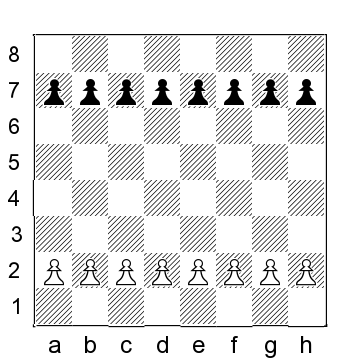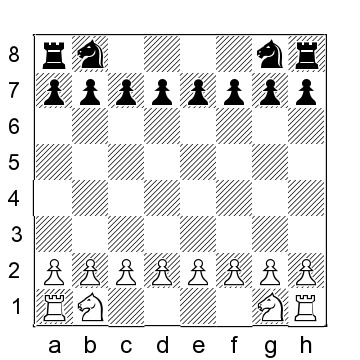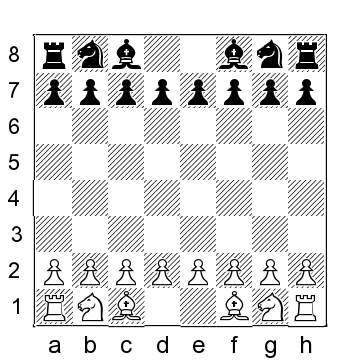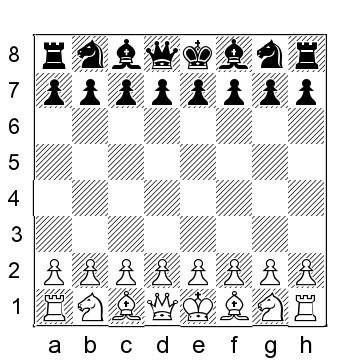Chessboard Setup
A chessboard is a gameboard used to play chess. It consists of 64 squares, 8 rows by 8 columns, on which the chess pieces are placed. It is square in shape and uses two colours of squares, one light and one dark, in a chequered pattern. During play, the board is oriented such that each player’s near-right corner square is a light square. The columns of a chessboard are known as files, the rows are known as ranks, and the lines of adjoining same-coloured squares (each running from one edge of the board to an adjacent edge) are known as diagonals. Each square of the board is named using algebraic notation; algebraic notation is the FIDE standard. In algebraic notation, using White’s perspective, files are labeled a through h from left to right, and ranks are labeled 1 through 8 from bottom to top; each square is identified by the file and rank which it occupies.
- Lay out the light square in the bottom-right corner.
Set up the pawns on the second rank.

Put your rooks in the corners.

Place your knights next to your rooks.

Bishops go next to knights.

Queen goes on her color.

Place your king in the last square available.

Don’t forget, white moves first!